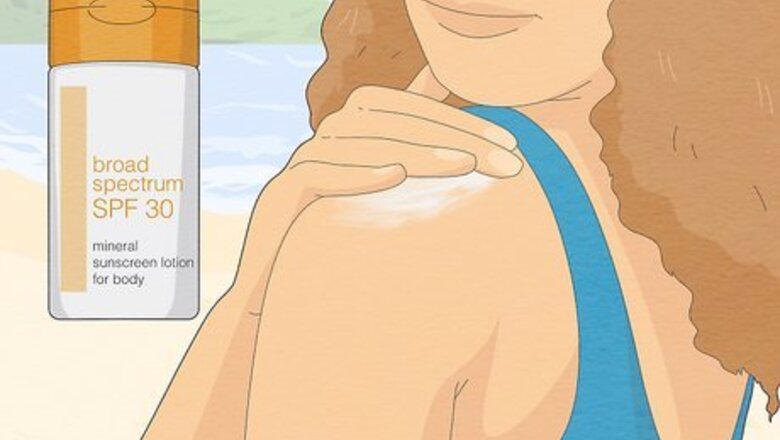
views
Wear broad-spectrum sunscreen.
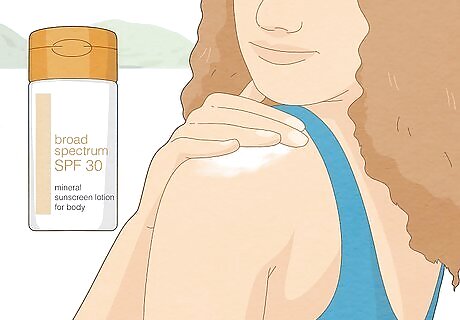
Broad-spectrum sunscreen protects from both kinds of harmful UV rays. Though it’s best to avoid sun tanning if possible, the right kind of sunscreen can offer protection if you're determined to get a natural tan. Use SPF 30 sunscreen (or higher) that says "broad spectrum" on the bottle. Cover every part of your body in sunscreen before heading out into the sun to ensure you don't get burned. Apply sunscreen within 20 minutes of going outside, and reapply every 1½ to 2 hours—or more frequently if you get wet or sweat during that time. Broad-spectrum sunscreen is imperative because it protects your skin from UVB rays (which burn your skin) and UVA rays (which age your skin and cause wrinkles). Check the back of the sunscreen bottle to see its UVA star rating, which ranges from 1 star (minimum protection) to 5 (maximum protection). Make sure your product of choice isn't a 1-star sunscreen!
Tan for a max of 2–3 hours a day.
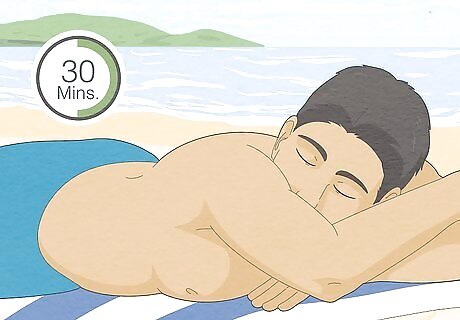
Skin has a natural cut-off point, after which it won't make more melanin. It only takes 2 or 3 hours in the sun for your body to stop producing melanin for the day—which means you won’t get any tanner no matter how long you stay outside. Spend a couple of hours tanning at the most, rather than making it an all-day endeavor. You'll still get the most out of your tanning time! It's tempting to tan all day, but it exposes your skin to unnecessary UV damage. It takes even less time to stop producing melanin if you’re fair-skinned. Monitor your skin carefully to figure out your cut-off time, and make a point to stop tanning after that time.
Sunbathe outside of peak sun hours.
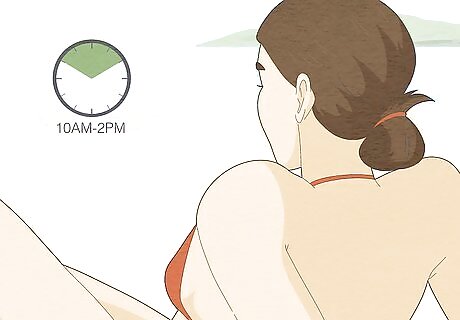
The sun is strongest (and most likely to burn) between 10 AM and 2 PM. It's tempting to tan when the sun is at its peak, but you're also more likely to damage your skin. Tan outside those hours, or take extra precautions if you can’t. Reapply sunscreen every 1 ½ hour during peak sun to ensure full protection. Take frequent breaks in the shade and cover up as much as possible when the sun is strongest. When it comes to reapplying sunscreen, it doesn't matter whether you've been swimming or resting in the shade. Always reapply after a couple of hours or risk getting a sunburn!
Change sunbathing positions often.
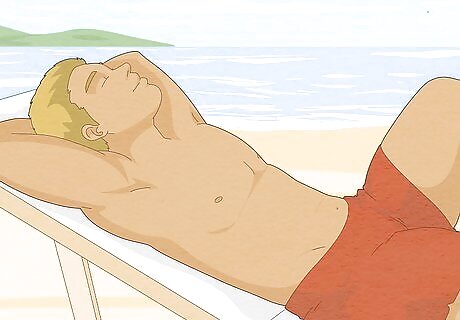
Rotate your body to ensure that no part of you gets too much sun. Change your tanning angle frequently, ensuring each side of your body catches some sun for a little while. Alternate between laying on your back, belly, and sides when you can, and cover up spots that have already gotten sun. If you lay still the whole time, you may get too much sun in one spot and even get burned.
Take breaks in the shade.
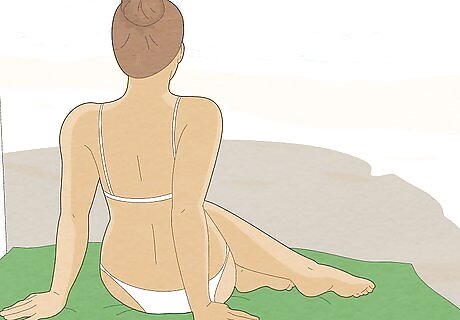
Shade breaks reduce sunburn risk and limit UV exposure. If you plan to tan for a couple of hours, take periodic breaks in a shady spot. You're less likely to get a sunburn if you give your skin a break every now and again. Plus, preventing a sunburn actually means the tan you get will last longer, in addition to being healthier. Make sure there's a shady area wherever you tan. You could set up a beach tent or umbrella, or go find shelter indoors if necessary.
Cover up with clothing.
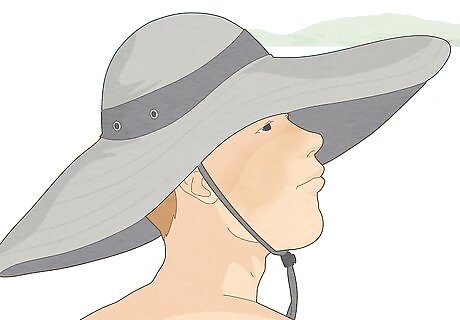
Protect your skin (especially burned areas) with clothing. Wear a wide-brimmed hat to protect your face from the sun, and wear clothes—including long-sleeve shirts or pants when possible—to prevent sunburn. You can uncover during your set tanning hours, but once you've spent a couple of hours in the sun, it's time to cover up again since your body is done making melanin.
Hydrate your skin after tanning.
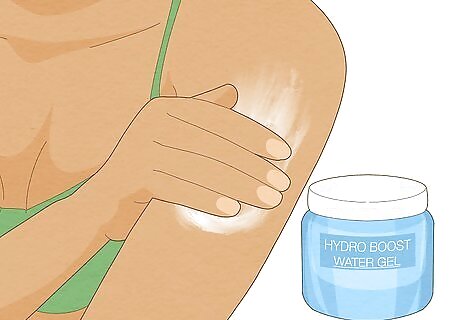
Hydration maintains the tan and soothes your skin after sun exposure. Sun dries out your skin, so nourish and hydrate it after each outdoor tanning session. If you get tanned (or even burned), rub a water-based hydrating cream into your skin afterward. Not only will this feel great on your skin, but it'll prevent any further blistering and inflammation—and preserve your tan for longer. Drink plenty of water, too. It's important to keep your entire body hydrated!
Use skin oils with a natural SPF.
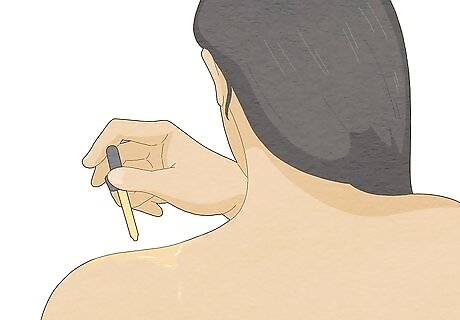
Natural SPF is present in avocado, coconut, olive, and almond oils. They can also give your skin a hydration boost while protecting it from the sun at the same time. Apply skin and facial oils at night, long before you put on any sunscreen, so the oil doesn't interfere with the sunscreen's protective abilities during the day. Never substitute oils for proper sunscreen, as they don’t have enough SPF to shield your skin fully. Always use sunscreen before tanning outside! Avoid layering too many products on your skin before applying sunscreen. Oil by itself is all right, but when multiple products are coating your skin, the sunscreen can't properly cover your skin cells.
Eat foods that boost sun protection.
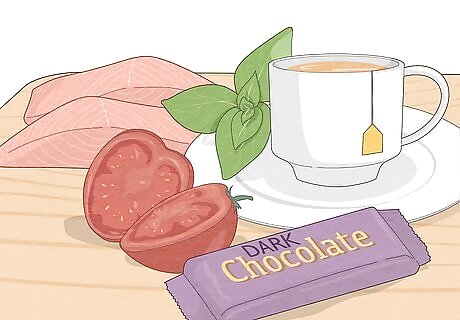
Certain antioxidants can reduce the risk of sunburn and inflammation. Your skin has a natural SPF (sun protection factor) antioxidant called lycopene. The more lycopene you have in your body, the more resistance your skin has to harmful UV rays. Eat foods that contain lycopene, including tomatoes and most red and orange produce. Drink green tea after sun exposure. Green tea contains polyphenol antioxidants, which have an anti-inflammatory effect that calms your skin. Eat foods that contain omega-3 oils, like fish, chia seeds, walnuts, and soybeans. Omega-3 oils also have anti-inflammatory properties that are good for your skin. Dark chocolate contains flavonoids that protect your skin from sunburn, so don't be afraid to indulge in a sweet snack!
Take daily beta-carotene supplements.
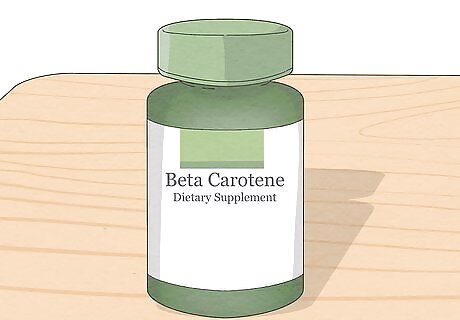
Beta-carotene boosts your skin's tanning ability. Take a daily 25 mg beta-carotene supplement, which will improve your body's production of melanin—and therefore its ability to tan. With supplements, your skin will have a little extra natural defense against the sun's UV rays when you go tanning outside. Like oils, beta-carotene supplements aren't a replacement for sunscreen. Apply the same generous amount of sunscreen every time you tan outside!
Use a self-tanning lotion.
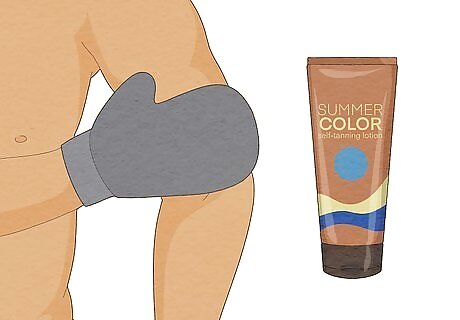
Self-tanning products safely coat your skin rather than penetrating it. The safest way to get a tan by far is using a self-tanning lotion at home. When using the lotion, start by showering and exfoliating your skin with a washcloth, which helps create a more even tan. Dry your skin off, and then apply the lotion section by section on your body using a circular rubbing motion. After covering each body part, wash your hands, so they don't become overly stained. You can also use gloves. Run a slightly wet towel over your joints after applying the lotion. Your joints tend to absorb more of the product, making them look darker if you don't wipe them off. Let the lotion dry completely before getting dressed, so you don't stain your clothes. Not many people know sun tanning causes skin damage, even if you don't get burned. Tanning signifies that your skin is trying to protect itself by producing melanin. That's why lotions are so much safer to use.
Get a spray-tan.
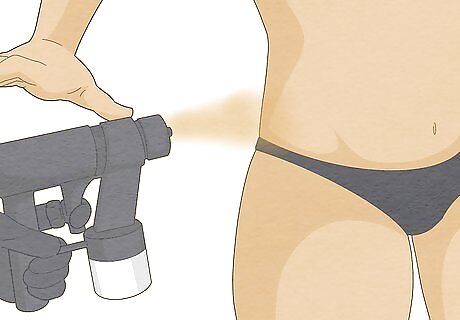
Like self-tanning items, spray tans are skin-friendly. A professional can give you a spray tan as an alternative to sun tanning or bed tanning, and it won't cause damage to your skin because the tan is completely surface-level. Get a spray tan if you're looking for more even coverage than you can give yourself at home. Be careful not to breathe the spray product in or get it in your eyes.
Use fake tan and SPF sunscreen separately.
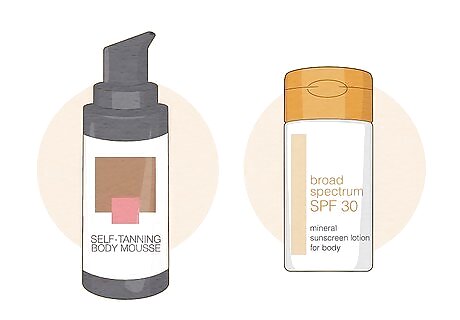
An ingredient in fake tan can cause the SPF to break down before use. DHA is a simple carbohydrate commonly found in fake tanning products, but it can interfere with sunscreen's protective abilities. If you want to tan a little before you head outdoors for sun tanning, make sure you apply tanning lotion at least 24 hours before using any sunscreen. Avoid using a fake tan product that advertises both tanning and SPF protection, as any product with DHA will not be effective against UV rays.
Stay away from tanning beds.
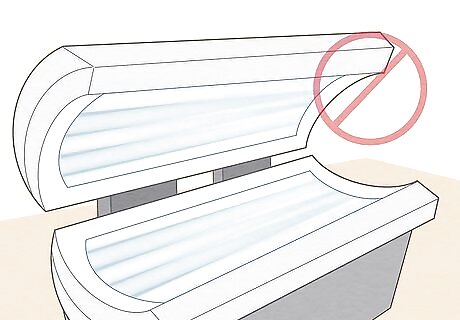
Tanning beds can damage skin and increase the risk of skin cancer. They cause just as much UV damage to your skin as laying out in the sun, producing large amounts of UVA, which ages and wrinkles your skin. If you want a tan, avoid tanning beds no matter what, and go for a safe, gentle tanning lotion instead. Tanning beds are especially unsafe if you’re under 18, as you’re more susceptible to skin damage. The Fitzpatrick scale sorts skin into 6 types; 1 is pale white skin that always burns and never tans, while 2 is fair skin that burns easily and tans poorly. Tanning beds are risky if you have type 1 or 2 skin since you burn so easily. If you must use a tanning bed, do it slowly, Have shorter sessions to build a tan without burning, and go as little as possible—once per week at most. Make sure you use goggles designed for tanning beds.
Beware of tanning pills.
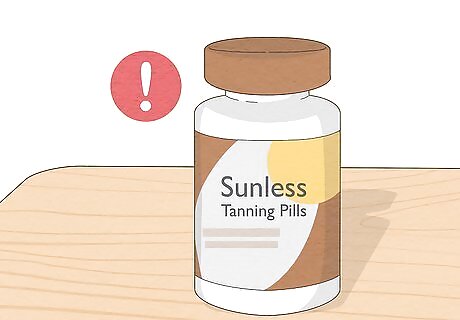
Tanning pills can be extremely harmful to your liver. Though they may seem appealing since they help you avoid sunburn, tanning pills are not FDA-approved because they often cause damage elsewhere in your body. Not only can they cause liver damage, but they may also cause you to have vision problems or break out in hives. Stick to self-tanning lotion and avoid tanning pills entirely.












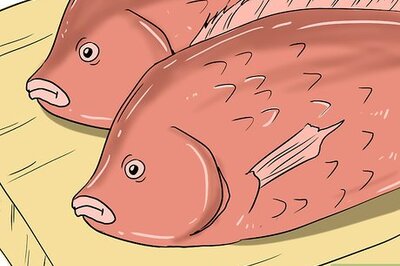
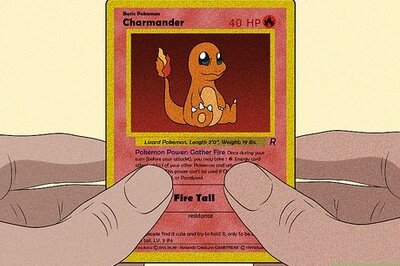

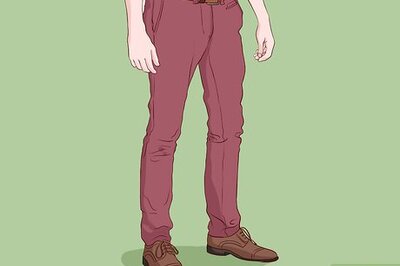
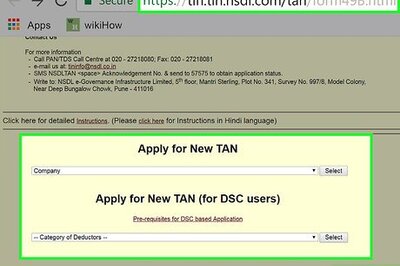
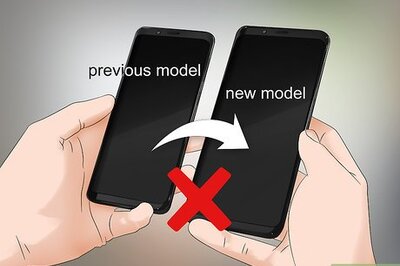
Comments
0 comment